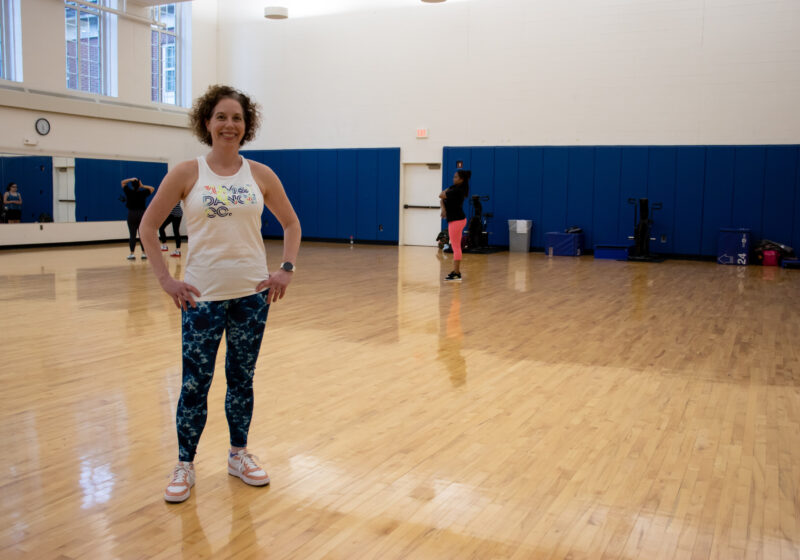The energetic standing ovation and raucous applause that brought soloist Leila Josefowicz back to the stage five times captured the Saturday night fever in the Eastman Theatre.
Sweeping onto and off of the stage in her strapless gown with the confidence of a true prima donna, Josefowicz graciously accepted the adoration of an audience thrilled with her performance of the Tchaikovsky violin concerto and waiting on pins and needles for an encore.
Much to the chagrin of the audience, the lights came up and the show went on instead.
Rather than showcasing the piece generally expected to be the audience favorite by placing it at the end of the concert program, the RPO’s fourth Philharmonics concert of the year sandwiched this passionate, vivacious concerto in between two lesser-known works ? the “Peacock Variations,” by 20th century Hungarian composer Zoltn Kodly and the Symphony in D Minor of 19th century Frenchman Cesar Franck.
Although still effective, I think the concert would have been exulted rather than just complimented had the talented, upstart violinist been slated to play last.
From my seat in the balcony, I could clearly see that Josefowicz was a dynamic performer who uses the visual power of body movement to add to the strength of her sound.
A commanding presence on stage, Josefowicz often literally threw herself into the music she was playing. From my vantage point, the deliberate placement of the bow during lyrical sections, sweeping arm movements during louder passages and sharp, forward movements during extremely energetic passages heightened the drama of the concerto.
While a friend of mine on the orchestra level mentioned not liking Josefowicz’s constant motions, explaining that they seemed contrived at times, the audience’s enthusiastic ovation when Josefowicz delivered the final D that closes the piece argues that they were too moved to be offended by any seeming artificiality.
However, the mellifluous music flowing from her violin ? the 1739 “Ebersolt” Guarnerius del Ges and not a Stradivarius, a more conventional choice for professional violinists of Josefowicz’s caliber ? would have stood just fine on its own without the visual aids.
Seaman’s commanding presence on the conductor’s podium enabled a great rapport between soloist and ensemble. The RPO accompanied Josefowicz sensitively and with a rhythmic and dynamic togetherness.
Opening the concert with Kodly’s “Peacock Variations,” variations on a Hungarian Folk Song, the RPO expressed a variety of different emotions within a 25 minute span. The piece’s 16 variations run a gamut of expression from bright, passionate and lively to calmer and funereal.
Although I had never heard the piece before, I enjoyed the different moods that were expressed and the spirit with which they were presented.
Kodly’s theme of the peacock bore political significance, as I learned from the program notes ? “Fly Peacock, Fly” is a Hungarian folk song “whose text is a metaphorical call for freedom from tyranny.” Premiering in November of 1939, a time in which his country stood on shaky political ground, “Peacock Variations” was banned from performance by the Hungarian government shortly after its premiere.
The violin concerto that followed was also a controversial work in its time. Created by master Russian composer Peter Tchaikovsky, the piece was first greeted with a general sticking out of tongues by violinists and music critics alike. Conservative critic Eduard Hanslick went so far as to say that the finale of the concerto contains music that “stinks to the ear.”
Today, the Tchaikovksy concerto is a highly respected and extremely popular piece with scholars, performers, conductors and audiences.
She mentioned that the Tchaikovsky concerto wasn’t the piece she was most anticipating ? the Franck symphony was. After listening to the piece, I could see why she held it as a favorite. Seaman, in his program notes, describes the Symphony in D Minor a “perfect example [of] a thorough-going, red-blooded, innovative Romantic spirit.”
Contrasting the D major of the Tchaikovsky, this work in D minor is also a beloved work today despite the fact that it was initially criticized by musicians and listeners in the arena of late 19th century France.
Saturday night’s RPO concert was certainly an enjoyable experience that introduced me to two new pieces and inspired me to get out old recordings of a third. The stellar program gave the musicians and the conductor a chance to shine, while probably inspiring any little girl in the audience that night to pick up the violin in the hopes of someday standing in a beautiful dress on stage in the Eastman Theatre bowing to thunderous applause.
Weiss can be reached at jweiss@campustimes.org.

